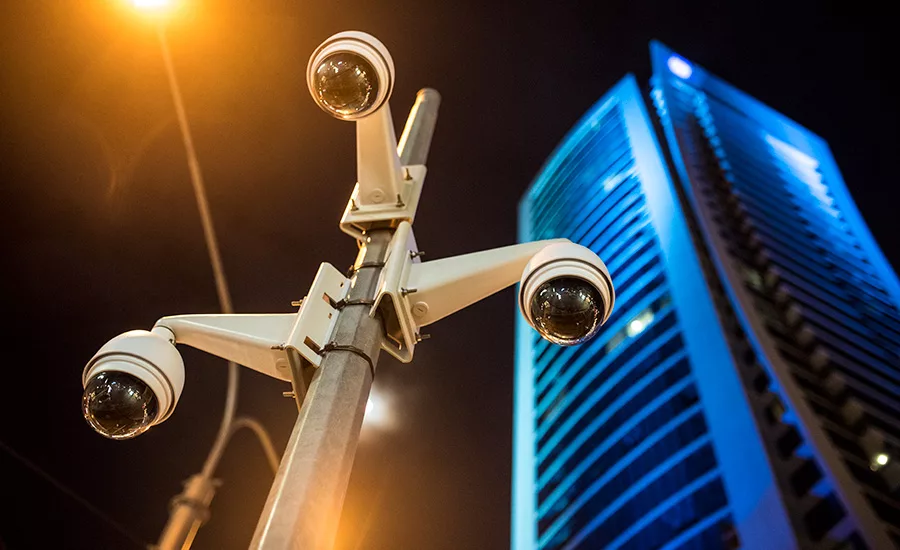Three markets that can find value in smart security cameras

The health, safety and security challenges that business owners and managers have faced in 2020 have made one thing very clear: COVID-19 has acted as a catalyst for a flurry of investments designed to spur the reopening of retail stores, commercial office space and public venues. Such investments don’t need to be singularly focused on opening the doors, but instead can be part of a more sustainable solution that can offer long-term value and flexibility that can be applied to a variety of situations.
This is where smart security cameras connected to the Internet of Things (IoT) can help. Due to their ability to be flexibly equipped and re-equipped with different Artificial Intelligence (AI)-enabled video analytic applications, a single security camera can be used for face mask detection and heat mapping - while also assisting in optimizing facility layout to increase sales conversions in retail stores and planning inventory stock. Beyond security and safety uses, here are three different vertical markets that can benefit from the added flexibility offered by a smart camera system:
Increase sales and optimize retail store operations
Many retail stores have been in search of a solution to assist in providing customers and staff with a safe shopping environment - both from security risks and those brought on by COVID-19. However, the same applications that can be used to manage store occupancy through people counting can be used to better understand customer shopping habits and optimize retail operations.
AI-enabled apps can streamline operations through analyzing customer behavior. By assessing customer traffic over time, managers can plan for peak periods and zones and take advantage of upselling opportunities in highly trafficked areas and effectively increase sales per square foot. Object detection applications can monitor the volume of stock on shelves and notify staff to refill before items are sold out. Zone counter applications, which can also be used for occupancy management, can be used for analyzing interactions with a particular shelf or area of a store - enabling managers to better plan inventory. Combined with data from POS systems, the intelligence gathered with these cameras allows the calculation of conversion rates down to specific departments of a store. Adding demographic attributes, which these smart video devices can also analyze, provides an even more comprehensive analysis of shopper profiles and behavior.
Reduce energy consumption in commercial buildings
The base functions of smart video analytics are vital to managing buildings more easily and efficiently. Smart cameras can reduce energy usage in commercial spaces by measuring room occupancy and helping to adapt air conditioning levels. By detecting how many people are in one location over a certain period of time, cameras can help control ventilation or heating – according to demand. This is especially useful for office spaces that might be implementing a hybrid remote work/office plan. This ensures building managers can effectively control energy usage, based on lower occupancy at varying times.
Additionally, where staffing levels are of concern, basic facility management and administrative functions can be assisted by smart cameras. The cameras can identify open work and meeting spaces with sufficient space for social distancing and assess the cleanliness of each area or indicate the last time the area had been sanitized. Additionally, they’re able to identify if conference room lights or devices have been left on or notify personnel of stock items needed in office break rooms.
Manage the flow of visitor parking
Often a tedious and difficult task for many, the search for a parking space can be a true test of patience. Through the use of cameras outfitted with AI-enabled parking management apps, traffic flow can be directed through the detection of available spaces or recognition that a parking area is full. They can also assist in controlling the flow of traffic at peak times to prevent jams and long waits at exits. Additionally, these cameras can reduce or eliminate the use of parking gates and ticketing machines - replacing them with LPR technology to track entry and exit times. Integrations with payment systems allow for a completely digital and contactless payment process that can alleviate maintenance and equipment costs, as well as reduce the number of staff needed onsite.
Investing in smart surveillance cameras that can be repurposed later enables facility owners and managers across all sectors to design a sustainable system with robust application offerings for many types of scenarios. Deploying this technology can optimize commercial building functions, increase sales per square foot, offer assistance with visitor management and increase overall customer satisfaction regardless of vertical application.
Looking for a reprint of this article?
From high-res PDFs to custom plaques, order your copy today!








